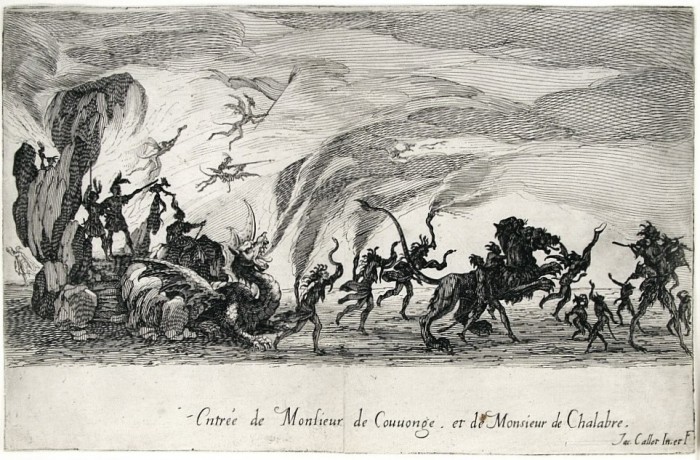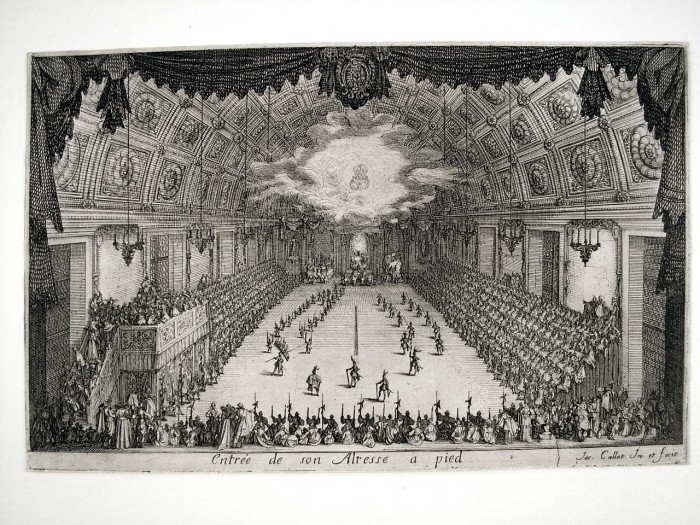Le Combat a La Barriere (The Combat at the Barrier)

Jacques Callot (1592-1635), Le Combat a La Barriere (The Combat at the Barrier), 1627, etchings, the complete set of 10, including the title plate and the nine etchings. Reference: Lieure 575-584. In very good condition, on old laid papers with thread margins (occasionally trimmed on the platemark); two with center folds, occasional stains or soiling), the title 6 x 4 3/8, the plates approximately 6 1/8 -6 3/16 x 8 11/16 – 9 9/16 inches.
A fine, uniform early set, before the posthumous Fagnani printing, in only states except: L. 575 in state 2 (of 3) [Lieure notes that state one is extremely rare]; L. 578 first state (of 2); L 583 first or second state (of 2) [and with the early Lieure 29 watermark].
Watermarks: L. 577, 579, 580, 583 with the Interlaced C watermark (Lieure watermark 29); L. 582 with the 4 Lorrain watermark (Lieure watermark 35).
In Plate 578, the Entree of MM De Vroncourt, there are in the distance two small boats. This confirms that this plate is a first state; in the second state (Fagnani) impressions these have been effaced. On Plate 583 Lieure describes in vague terms a very rare first state with some problematic lines in the curtain at the right, corrected later. Our impression has some weak lines, as have several other very early impressions we have examined; it also has an early watermark; it is quite probable that ours is a first state or that no such first state as described by Lieure exists.
The 10 prints in the Combat series were created to commemorate a tournament sponsored by Duke Charles IV of Lorraine, in his palace at Nancy, in honor of his beautiful cousin the Duchess of Chevreuse who was in exile at Lorraine after the discovery of her role in the plot against Richelieu. The Duke and his cousin the Prince of Phalbourg fought for her favor in an evening joust – the fight itself is shown in the culminating plate.
The series shows Callot at his best in a range of motifs, showing crowds and individuals, astonishing details and marvelous compositions, reality and invention, all etched splendidly.
Callot’s illustrations eventually were included in a book on the event written by the blind court poet Henry Humbert. Various floats, chariots and individuals are shown entering the arena. Humbert writes of the entry of Vroncourt, Tyllon and Marimont: “They were raised up on a dolphin, armed with silver armor…Before their machine was seen Arion carried by another dolphin in the middle of the waves of the sea, who fondly touching his lute, blended his harmonies with the accidents of his voice.” The entry of the Duke (the star) is described thus: “Vulcan with the nude Cyclops appeared next in a grotto, at the rear of which was a blazing furnace, where these dark artisans forged the arms of the sun..” (Callot had in fact designed the chariot of the forge of Vulcan.)
